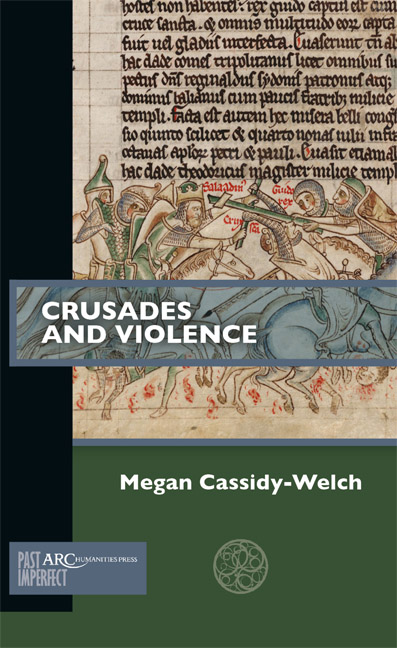Introduction
Published online by Cambridge University Press: 13 February 2024
Summary
“The holy war itself was nothing more than a long act of intolerance in the name of God which is the sin against the Holy Ghost” (Runciman)
“For Christians in all ages sacred violence cannot be proposed on any grounds save that of love” (Riley-Smith)
The view expressed in Stephen Runciman's above quotation—that crusading can be interpreted as a simple exercise of religious intolerance—has been significantly nuanced over the last half century. The complex religious motivations and character of the set of actions we collectively define as “crusading” has been more sensitively and carefully delineated (as Jonathan Riley-Smith's comment above indicates). Historians no longer view crusading as the undifferentiated actions of a monolithic and persecuting society. The many contexts and meanings of crusading have sparked dozens of studies on motivations for crusading, the nature and reach of crusade preaching, the environmental, cultural, liturgical, monastic, gendered, memorial, and material aspects of the crusades and the worlds that produced and responded to them. The “cultural turn,” then, is a prominent feature of crusade scholarship over the last twenty years or so.
In this book, I intend to concentrate on medieval ideas about space, the body, emotion, and memory as ways of analyzing and understanding crusade violence. This approach will, I hope, shed new light on what is an issue of both medieval and modern concern. Violence itself was part and parcel of crusading as a military activity. But in recent times, crusade violence has also become a worryingly important element in modern medievalisms which construct the Middle Ages as a historical model for dealing with perceived present problems. The upsurge in white supremacy, racisms, and other forms of dangerous intolerance across the globe in the last decades is all too frequently accompanied by images and assumptions about the violence of crusading as something to be honoured and replicated. It is my hope that by parsing more carefully how cultures construct and remember violence will help us to understand better how and why this has occurred.
How, then, should we now understand the innate violence of crusading?
- Type
- Chapter
- Information
- Crusades and Violence , pp. 1 - 18Publisher: Amsterdam University PressPrint publication year: 2023

